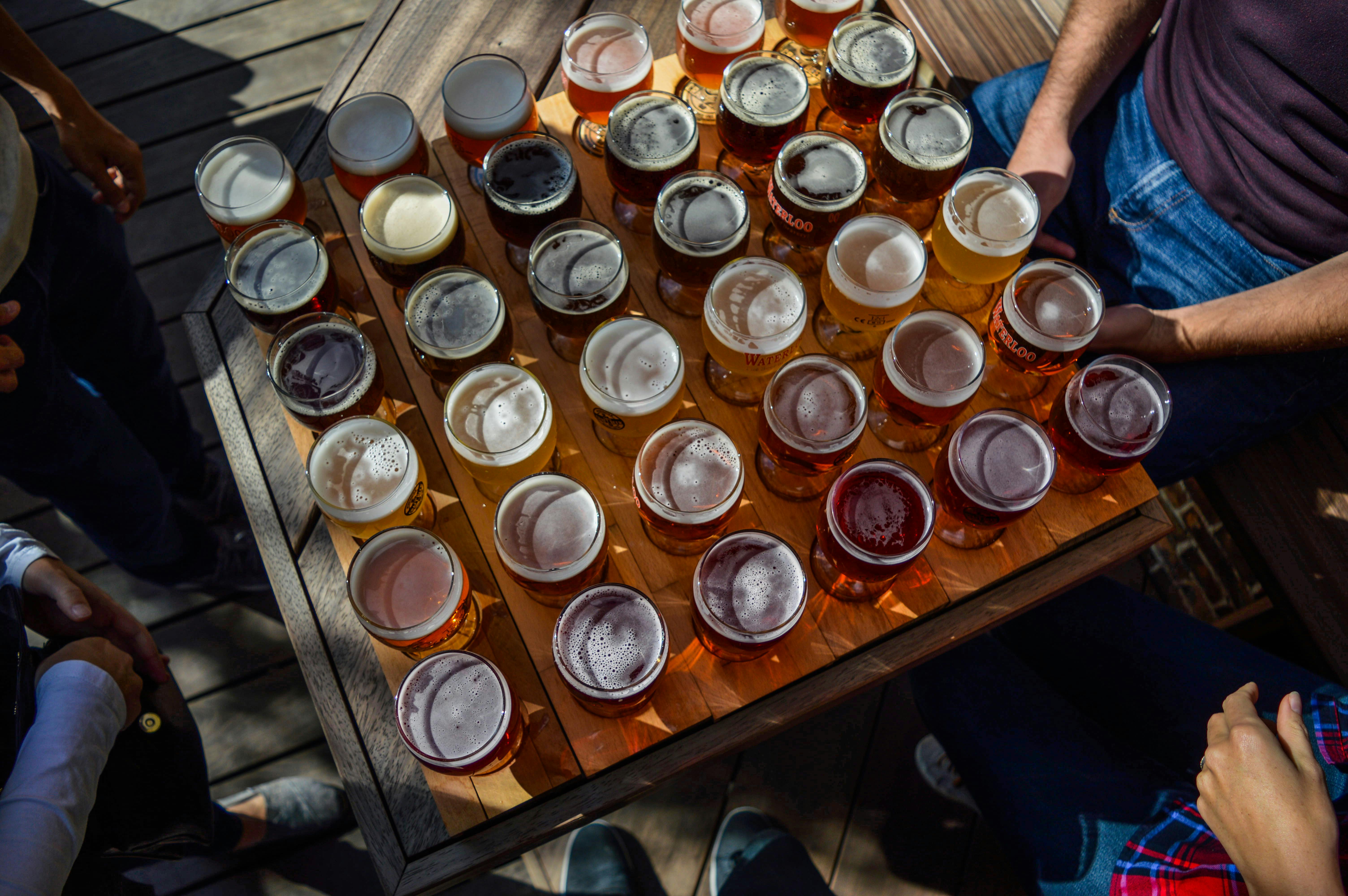Vodka is one of the world’s most popular spirits and is known for its smooth, clean taste. But how many times should vodka be distilled to achieve that perfect flavor? The answer depends on the type of vodka being made and each distiller’s individual preferences. In this article, we will explore the process of distillation and look at how many times vodka should be distilled in order to produce an optimal flavor profile.It is recommended to distill vodka at least three times in order to achieve an optimal taste.
Benefits of Distilling Vodka Multiple Times
Distilling vodka multiple times has a number of benefits, the most notable being its improved taste. The process of distilling vodka multiple times is referred to as ‘rectification’, which involves removing any impurities from the vodka. The number of times the vodka is distilled will depend on its intended use, but generally speaking, more distillations will result in a smoother and more palatable product.
Another benefit of distilling vodka multiple times is that it can help to remove harsh flavor compounds which are created during fermentation. By removing these compounds, the overall flavor profile of the vodka can be greatly improved. This is especially beneficial for vodkas that are intended to be consumed neat or on ice.
Finally, another major benefit of distilling vodka multiple times is that it can help to increase its shelf life. As impurities are removed from the spirit during rectification, it becomes less susceptible to spoilage and degradation over time. This makes it ideal for long-term storage and ensures that you can enjoy your favorite vodkas for months or even years after you purchase them.
Milling
The first step in the process of distilling vodka is milling. This involves grinding the grains, such as wheat or rye, into a fine flour-like consistency. This is done to ensure optimal extraction of the starches and sugars from the grains during fermentation. The finer the grain is ground, the more efficient and complete extraction can take place.
Mashing
The next step in the distillation process is mashing. This involves combining the milled grains with hot water, which helps to break down and dissolve the starches in them. The resulting mixture is then cooled down before enzymes are added to convert these starches into sugars. This sugary liquid is referred to as “wort” and it serves as a base for fermentation.
Fermentation
Once the wort has been prepared, it can be transferred into fermentation tanks where yeast is added to begin the process of fermentation. During this time, yeast consumes sugars in the wort and converts them into alcohol. Depending on the type of vodka being made, this process can take anywhere from two days to two weeks
What Type Of Still Is Best For Distilling Vodka?
The best still for distilling vodka is a pot still. Pot stills are the traditional stills used in vodka production and are designed to efficiently separate the alcohol from the water. They use a single heated chamber, which is filled with fermented mash or liquid, and then heated up to boil off the alcohol. The alcohol vapors then travel through a condenser, where they are cooled back into liquid form and collected. This method of distillation produces a higher proof vodka with more flavor complexity than other types of stills, such as column stills.
Pot stills can be further divided into two categories: pot alembic and pot rectification. Pot alembic is an ancient type of distillation that uses direct heat to boil off the alcohol vapors. This method produces a high-quality product, but it’s slow and inefficient compared to modern methods. Pot rectification is a newer method that uses indirect heat to boil off the alcohol vapors, which makes it faster and more efficient than alembic distillation. It also produces a higher proof spirit with more flavor complexity than
How Many Times Should You Run A Still When Distilling Vodka?
When distilling vodka, the still should be run at least three times to ensure it is pure and free of impurities. Each time the vodka is run through the still it undergoes a process called rectification. Rectification involves separating out any unwanted components from the spirit and concentrating the alcohol content. This process also removes any other flavourings, like congeners, that can give vodka an unpleasant taste.
The first run through the still will remove any impurities from the spirit and concentrate its alcohol content. During this stage, it is important to monitor temperature as this can affect flavour and aroma. The second run will further refine the product by removing any remaining impurities and further increasing its alcohol concentration. During this stage, it is important to watch for any off-flavours or aromas that may be present in the spirit and adjust accordingly.
Finally, the third run through should be used to really dial in on flavour and aroma notes. This can be done by adjusting temperature during distillation or adding additional ingredients during maceration (the process of soaking raw materials in a liquid). Once

Does The Number Of Distillation Cycles Affect The Quality Of Vodka?
The quality of vodka is greatly affected by the number of distillation cycles it undergoes. Generally speaking, the more distillation cycles a vodka undergoes, the higher its quality. The process of distillation involves heating up a liquid and then cooling it down to remove impurities. When this process is repeated multiple times, it can help to further refine and purify the vodka. This ultimately results in a smoother, cleaner product with fewer impurities.
The number of distillation cycles also affects the ABV (alcohol by volume) content of the vodka. Higher ABV content means that the vodka will have a higher alcohol content, which can lead to an increased intensity in flavor and aroma. Additionally, more distillation cycles can result in a vodka that has been filtered more thoroughly, resulting in a cleaner taste and fewer impurities overall.
In addition to affecting flavor and ABV content, multiple distillation cycles can also be beneficial for safety purposes. Repeatedly removing impurities during each cycle helps to make sure that none remain in the final product which could be potentially harmful for consumption. This means
The Type Of Still Used Affects The Number Of Times Vodka Should Be Distilled
The type of still used to produce vodka affects the number of times it should be distilled. The traditional method of distilling vodka involves passing it through a still multiple times, each time purifying and refining its flavor. Different types of stills can be used to accomplish this process, and the number of times vodka should be distilled is largely dependent on the type of still being used.
Pot stills are among the most popular type of stills used to make vodka, as they produce a higher quality spirit than other types. These stills are usually used in smaller batches, and vodka distilled in them generally requires three or four distillation runs in order to reach its desired flavor profile.
Column stills are another popular type of still used for making vodka. These stills are capable of producing large amounts of spirit quickly, but the quality is often not as good as that produced by pot stills. Vodka distilled in a column still typically requires five or six distillation runs in order to achieve its desired flavor profile.
Finally, hybrid stills combine elements from both
How Does Temperature Affect The Number Of Times Vodka Should Be Distilled?
The temperature has an effect on the number of times a vodka should be distilled. Generally, the higher the temperature, the more distillations are necessary to ensure a high-quality spirit. As vodka is traditionally made from fermented grains, such as wheat or rye, these grains need to be heated during the distillation process. If the temperature is too low during this process, impurities can remain in the spirit and affect its flavor. On the other hand, if it is too high, it can cause an excessive reduction in alcohol content and a less flavorful spirit. Therefore, to achieve the desired flavor profile, a distiller must carefully control the temperature throughout each distillation run. Additionally, depending on how many times vodka is distilled and what type of still is being used (e.g., pot still or column still), this will also affect how many times it should be distilled.
In conclusion, temperature plays an important role in determining how many times vodka should be distilled for optimal quality. By controlling the temperature throughout each distillation run and taking into account what type of still

Conclusion
For the most part, vodka should be distilled at least three times in order to achieve the highest quality and flavor. This is because the impurities that are present in the liquid are removed during distillation, resulting in a smooth and flavorful drink. Additionally, higher-quality vodkas will usually have been distilled more times than those of lower quality. Ultimately, vodka is a personal preference and how many times it should be distilled depends on individual taste and preference.
No matter what you prefer, it’s important to remember that the distillation process is an art form that requires precision and care. The number of times a vodka should be distilled is an important factor when it comes to producing a high-quality product. With this in mind, it’s important to know your limits when it comes to how many times you should distill your vodka.

